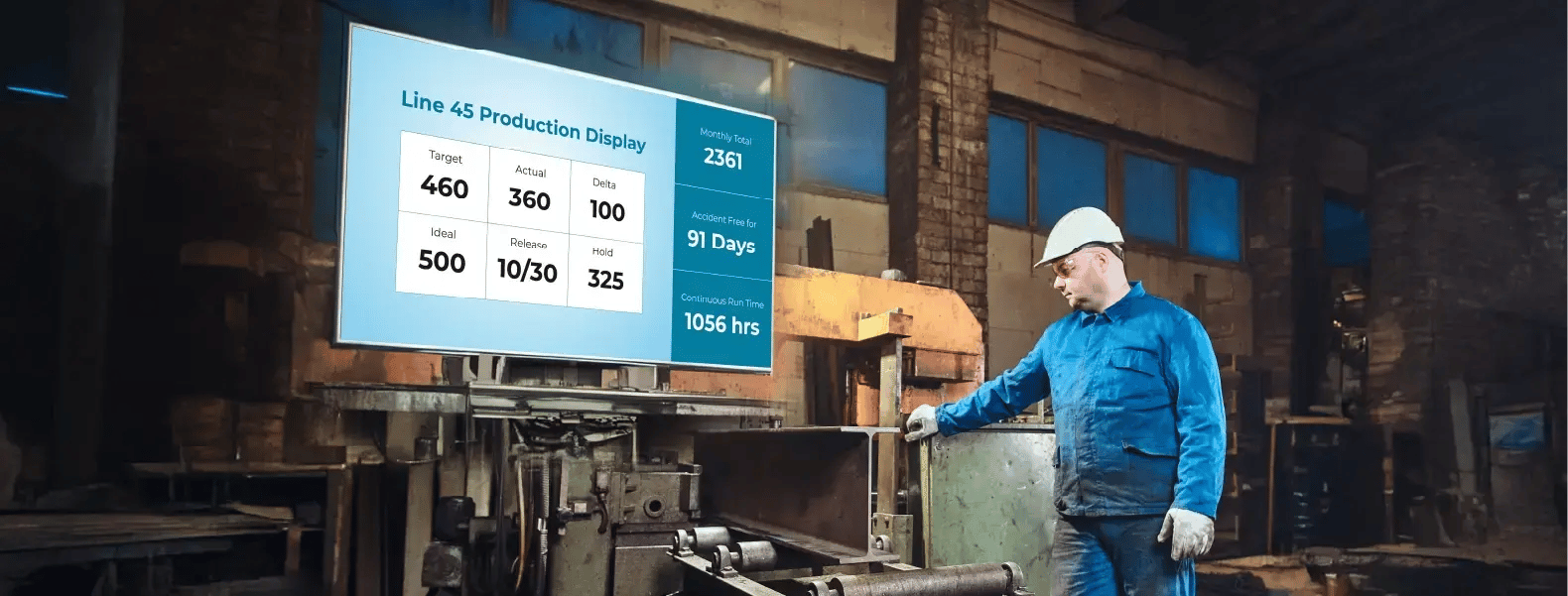Running a manufacturing plant demands precision and adaptability. The slightest inefficiency can ripple through the system, disrupting schedules, inflating costs, and eroding trust.
Every minute of downtime or miscommunication is frustrating and, more importantly, a missed opportunity. Delayed orders mean lost contracts, idle machines burn capital without output, and disjointed processes create tension across teams.
But improving your manufacturing workflow doesn’t require an overhaul.
Addressing inefficiencies with targeted, practical changes can transform wasted hours into optimized throughput, bottlenecks into seamless transitions, and reactive delays into predictable, controllable operations.
Strategies to Optimize Your Production Workflow
Maximizing efficiency on the shop floor requires more than surface-level fixes. It demands a proactive approach that combines clear communication, data-driven decision-making, and cutting-edge tools.
These strategies are designed to tackle inefficiencies head-on, providing a blueprint to elevate every aspect of your production workflow—from team alignment to predictive maintenance.
1. Standardize processes with a digital backbone
Variability is the enemy of efficiency.
Standardized processes remove ambiguity and ensure every team member is aligned. Digital tools like digital signage networks and task management systems serve as the central nervous system for consistent operations.
Imagine this: a digital signage network across your plant communicates real-time priorities.
As operators rotate shifts, there’s no gap in understanding, no reliance on word-of-mouth instructions. Efficiency soars because everyone is working from the same playbook.
Additionally, when production schedules shift due to urgent orders, digital signage ensures updates are communicated instantly, reducing response times and minimizing disruptions to your manufacturing workflow.
2. Strengthen cross-team communication
Miscommunication is one of the fastest ways to derail your production workflow.
Maintenance doesn’t learn about issues until it’s too late. Quality control waits on production reports that should’ve been automated.
Tools that centralize communication bridge these gaps and align departments. For example, when a machine signals a potential failure, automated alerts reach both production and maintenance teams simultaneously. Production adjusts workloads, and maintenance steps in before downtime snowballs.
With this approach, every department contributes to solving the problem without unnecessary delays.
3. Optimize decisions with data-driven insights
Your workflow for manufacturing has a wealth of hidden inefficiencies that only data can expose.
Metrics like defect rates, equipment utilization, and cycle times are not just numbers—they’re windows into the reality of your operations.
Take cycle time analysis: when one assembly station takes 30% longer than others, data shows the disparity and informs you where to focus improvements. Adjusting workloads or upgrading specific tools reduces lag. The result? A production workflow that flows—not stutters.
4. Build workforce skills to match operational demands
A skilled workforce isn’t just a checkbox but a significant competitive advantage.
Tailored on-the-job training ensures your shop floor team can address modern manufacturing challenges without over-relying on specialized support.
Operators equipped with dynamic training resources—like real-time digital guides at their stations—become autonomous problem-solvers. They troubleshoot common malfunctions in minutes rather than waiting for maintenance, cutting delays without compromising quality.
5. IoT and automation for disruption prevention
When it comes to manufacturing workflow, proactive beats reactive every time.
IoT sensors and automation transform your operations from a guessing game into a predictable system. Machines communicate their needs, and systems handle repetitive tasks, leaving your team to focus on high-value activities.
Picture a production line where IoT monitors detect subtle shifts in machine performance. Instead of waiting for a breakdown, your team receives an alert to schedule maintenance during low-demand hours.
Productivity remains stable, and costly downtime is avoided.
Manufacturing Workflow Optimization with Incremental Wins
True production optimization thrives on continuous, incremental improvements.
Beyond the strategies outlined, consider layering small, manageable experiments into your manufacturing workflow. Pilot new methods on a limited scale to measure impact and identify areas for expansion.
Whether it’s testing a new scheduling algorithm or redesigning a workstation layout for better ergonomics, these micro-innovations compound into significant gains.
Engage your team in these experiments. Operators and line supervisors often have first-hand insights into inefficiencies that top-level metrics might miss. Invite their ideas, test them, and adapt quickly based on results.
This participatory approach not only boosts morale but also ensures solutions are grounded in operational realities.
The Impact You Can Expect
When your workflow for manufacturing is optimized, the results ripple across every corner of your operation.
Predictive maintenance slashes unplanned downtime. Centralized communication prevents bottlenecks before they form. Standardized processes create reliability that resonates across shifts, teams, and product lines.
But optimization isn’t static. The next level comes from iteration.
What worked yesterday may not fit tomorrow’s challenges. Engage your team in continuous improvement—review data regularly, challenge existing processes, and explore emerging technologies.
The industry is constantly evolving, and so should your manufacturing workflow.
Ready to Optimize Your Manufacturing Workflow?
Small, smart changes drive big results. L Squared’s digital signage solutions keep your teams aligned and operations running smoothly. Book a demo today to see how we can help.






